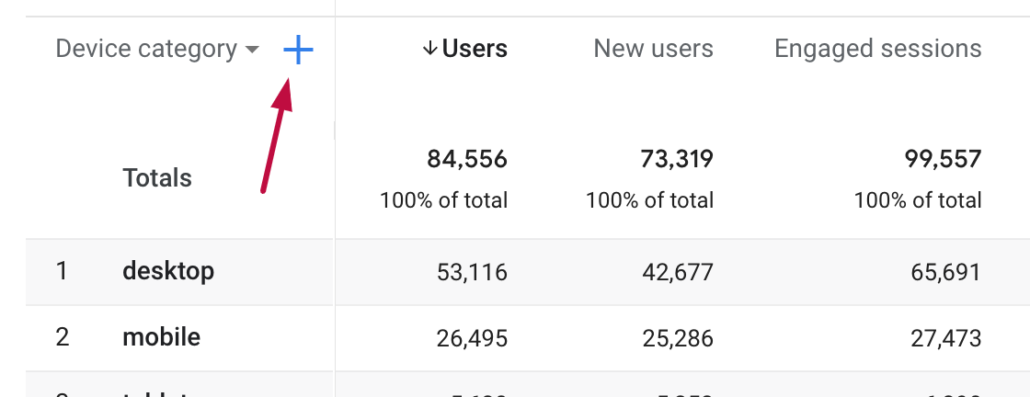Transform Your Analytics Approach With Additional Measurement in Google Analytics
Discovering the possibility of secondary measurements in Google Analytics opens a realm of opportunities for businesses seeking to elevate their logical approach. By incorporating second dimensions right into information analysis, a new layer of insights emerges, clarifying complex user habits and communications. This sophisticated degree of analysis not just fine-tunes advertising and marketing methods however also deciphers hidden possibilities for optimization and growth. The strategic application of additional dimensions holds the crucial to opening a treasure trove of indispensable details that can reinvent how services analyze and act upon their data.
Comprehending Additional Measurements in Google Analytics
Additional measurements in Google Analytics provide added context to key data by allowing users to analyze metrics throughout a 2nd measurement, offering deeper understandings right into customer behavior and interactions on an internet site. Secondary Dimension in Google Analytics. While primary dimensions offer essential data points such as pageviews, bounce rate, and session period, secondary measurements offer a more thorough view by segmenting the key data even more. This division enables individuals to assess metrics in mix with an additional measurement, such as web traffic resources, demographics, or individual actions
Advantages of Making Use Of Second Dimensions
Making use of secondary dimensions in Google Analytics supplies a critical benefit by enhancing the deepness of analysis and giving a more detailed understanding of customer interactions and behavior on an internet site. By integrating second measurements, experts can gain beneficial understandings right into the performance of specific sections or variables within their data. This enables a more comprehensive exam of user actions past surface-level metrics, permitting for a deeper exploration of the variables influencing individual interaction and conversions.

Just How to Carry Out Second Dimensions
When incorporating secondary dimensions in Google Analytics, one crucial step is to pick the pertinent metrics and dimensions to enrich the analysis process. Clicking on this switch will open up a drop-down food selection listing different dimensions that can be included to your key dimension for much deeper insights.
After picking the proper second dimension, such as 'Source/Medium' or 'Device Classification,' Google Analytics will certainly present the data in a much more comprehensive layout, enabling you to cross-analyze different facets of user habits. Bear in mind to explore various mixes of primary and additional measurements to reveal important patterns and fads that can notify your advertising and marketing approaches. By implementing secondary measurements thoughtfully, you can obtain a much more comprehensive understanding of your website or app performance and make data-driven choices to optimize your digital visibility.
Analyzing Information With Secondary Dimensions
Boost your data evaluation in Google Analytics by integrating additional measurements to delve deeper right into user actions patterns and maximize your digital advertising approaches successfully - Secondary Dimension in Google Analytics. By including secondary dimensions to go to website your main data, you can get useful insights that can aid you make informed decisions regarding your site or application efficiency
Evaluating information with second measurements allows you to sector your primary information better, offering an extra comprehensive view of individual communications. As an example, integrating the main dimension of 'source/medium' with a second measurement like 'touchdown web page' can disclose which details web pages are driving traffic from different sources. This information can be critical in fine-tuning your web content method or maximizing your marketing campaign to increase conversions.
Furthermore, utilizing secondary dimensions enables you to determine relationships between different metrics, assisting you comprehend the effect of various aspects on customer actions. Whether it's analyzing demographics together with individual engagement metrics or tool classifications with conversion rates, second measurements empower you to discover surprise fads and patterns that can lead your advertising initiatives.
Enhancing Efficiency With Secondary Measurements
To enhance the efficiency of information analysis navigate to this site and decision-making in Google Analytics, incorporating secondary measurements is vital to maximizing performance metrics and obtaining deeper insights right into user behavior patterns. By utilizing secondary dimensions, experts can dive past surface-level data and uncover useful relationships that might otherwise go undetected. This optimization technique enables companies to customize their advertising efforts better, determine areas for renovation in site functionality, and enhance general customer experience.
Second measurements offer a more thorough view of individual interactions by giving added context to key data metrics. For example, coupling the key measurement of 'touchdown web page' with a second dimension like 'device category' can disclose whether particular devices are most likely to drive involvement on specific touchdown web pages. This insight can notify receptive layout improvements or targeted marketing strategies to increase efficiency.

Conclusion
Finally, the assimilation of second dimensions in Google Analytics offers services with a powerful tool to boost their analytics method. Secondary Dimension in Google Analytics. By delving deeper into user behavior and interactions, marketers can reveal beneficial understandings that can drive performance optimization and boost the general user experience. Leveraging additional dimensions permits a much more extensive evaluation of information, causing even more educated decision-making and customized marketing initiatives
Additional measurements in Google Analytics offer extra context to main information by allowing customers to examine metrics throughout a 2nd measurement, supplying deeper insights right into user behavior and interactions on an internet site. While primary dimensions supply fundamental data points such as pageviews, bounce rate, and session duration, second measurements supply a more comprehensive sight by segmenting the key data better.One of the crucial advantages of using additional dimensions is the capability to reveal relationships and try this web-site patterns that may not be instantly evident when analyzing information with key measurements alone.When integrating secondary dimensions in Google Analytics, one crucial step is to pick the pertinent metrics and dimensions to improve the analysis procedure. Coupling the main dimension of 'touchdown page' with a second dimension like 'gadget group' can reveal whether certain gadgets are extra likely to drive engagement on particular touchdown pages.